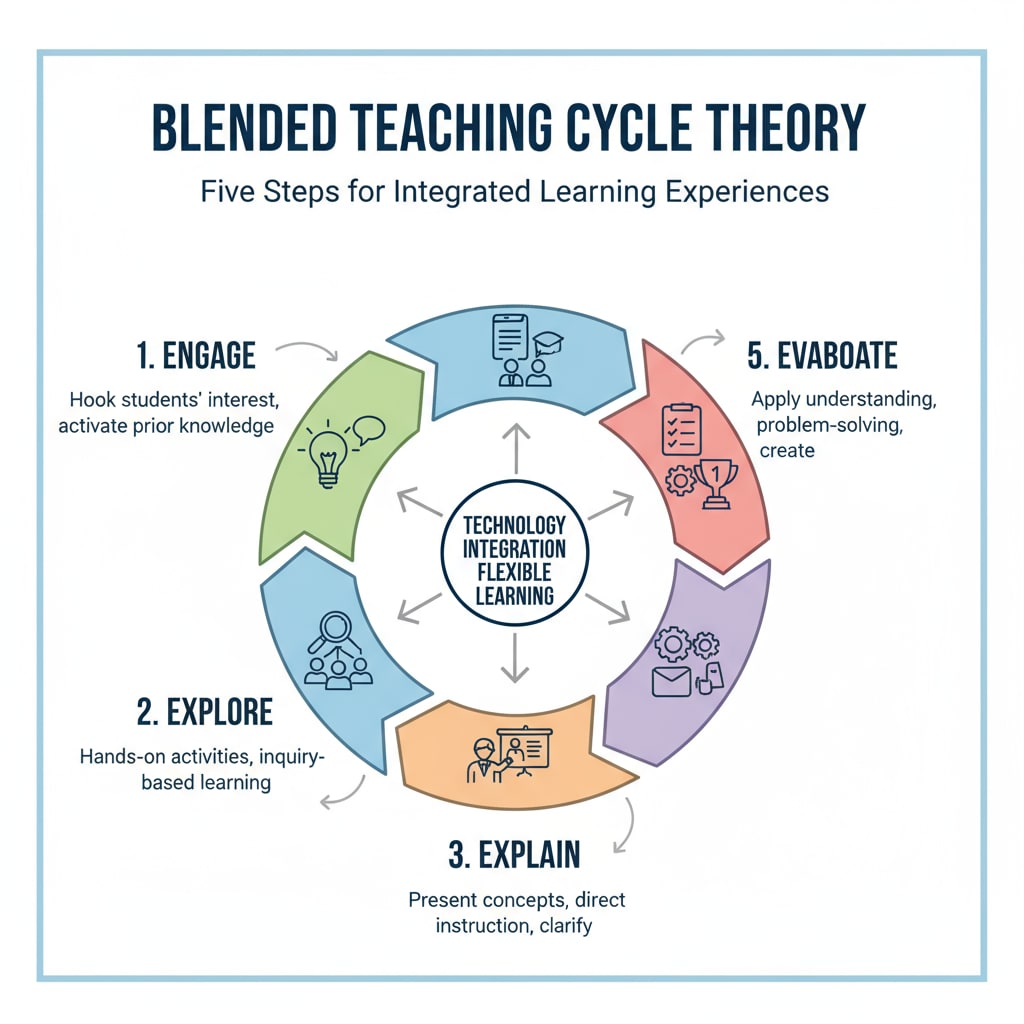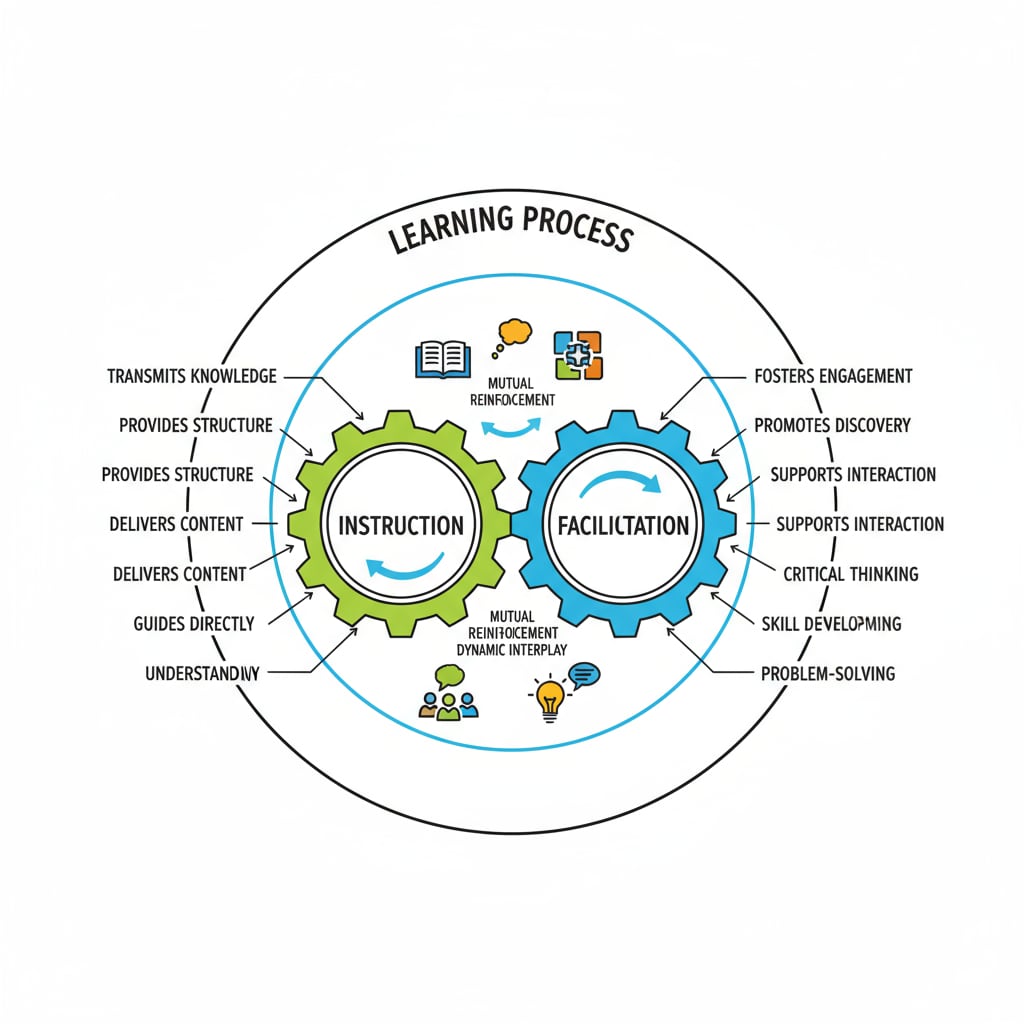The Blended Teaching Cycle Theory, an innovative educational model that marries the concepts of instruction and facilitation, has been making waves in the field of K12 education. This theory offers a structured yet adaptable framework, aiming to strike the perfect balance between teacher-led guidance and student-driven learning.

As educators strive to meet the diverse needs of students, understanding this theory and its implications becomes crucial.
Theoretical Foundation of the Blended Teaching Cycle Theory
The Blended Teaching Cycle Theory is rooted in the understanding that both instruction and facilitation play vital roles in the learning process. Instruction, the traditional method of transmitting knowledge, provides students with the necessary information and skills. On the other hand, facilitation encourages students to explore, question, and construct their own understanding. According to Constructivism on Wikipedia, learning is an active process where learners build new ideas based on their existing knowledge. This theory serves as the cornerstone for the Blended Teaching Cycle Theory, emphasizing the need for a combination of direct instruction and student-centered exploration.

Implementation Steps of the Blended Teaching Cycle Theory
The Blended Teaching Cycle Theory operates through a five-step cycle. The first step is “Engage,” where teachers create an interesting and relevant context to capture students’ attention. Next is “Explore,” during which students are given the opportunity to investigate a topic independently or in groups. In the “Explain” step, teachers provide clear explanations and fill in any knowledge gaps. The “Elaborate” step encourages students to deepen their understanding through further exploration and application. Finally, in the “Evaluate” step, both students and teachers assess the learning outcomes. Each step is interconnected, forming a continuous loop of learning. For example, if students struggle during the “Explore” step, teachers can adjust their explanations in the “Explain” step.
Readability guidance: The steps of the Blended Teaching Cycle Theory are presented in a clear list-like manner to enhance readability. Transition words like “next,” “finally,” etc., are used to show the flow of the process.
Application Value of the Blended Teaching Cycle Theory
This theory offers several valuable applications in education. Firstly, it caters to different learning styles. Visual learners may benefit from the engaging visuals in the “Engage” step, while kinesthetic learners can thrive during the hands-on “Explore” phase. Secondly, it promotes critical thinking. By encouraging students to explore and question during the cycle, they develop higher-order thinking skills. Additionally, it improves student engagement. The combination of teacher-led and student-driven activities keeps students actively involved in the learning process. According to Educational Psychology on Britannica, engaged students are more likely to retain knowledge and achieve better academic results.
Limitations of the Blended Teaching Cycle Theory
Despite its many advantages, the Blended Teaching Cycle Theory also has some limitations. One challenge is the time and effort required for implementation. Teachers need to carefully plan each step of the cycle, which can be time-consuming. Moreover, it requires a high level of teacher expertise. Teachers must be able to adapt to different student needs and guide the learning process effectively. Another limitation is the potential for unequal participation. In group activities, some students may dominate, while others may be left behind. Teachers need to be vigilant and ensure that all students are actively involved.
In conclusion, the Blended Teaching Cycle Theory, with its unique blend of instruction and facilitation, offers a valuable educational model. While it has its limitations, with proper planning and implementation, it can significantly enhance the learning experience in K12 education. Educators should consider incorporating this theory into their teaching practices to create a more balanced and effective learning environment.


